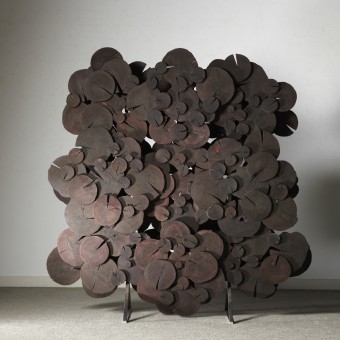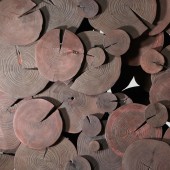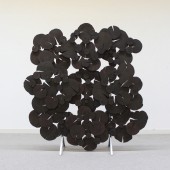
| THE AWARD |
| CATEGORIES |
| REGISTRATION |
| SUBMIT YOUR WORK |
| ENTRY INSTRUCTIONS |
| TERMS & CONDITIONS |
| PUBLICATIONS |
| DATES & FEES |
| METHODOLOGY |
| CONTACT |
| WINNERS |
| PRESS ROOM |
| GET INVOLVED |
| DESIGN PRIZE |
| DESIGN STORE |
| THE AWARD | JURY | CATEGORIES | REGISTRATION | PRESS | WINNERS | PUBLICATIONS | ENTRY INSTRUCTIONS |
Pattern of Tree in Order to Organic Furniture by Hiroyuki Morita |
Home > Winners > Design #31494 >Interview |
 |
|
FS: What is the main principle, idea and inspiration behind your design?
HM: I design it assuming suggestion to lead to the solution to social problem. Therefore, an existing concept has much inspiration. It sometimes appeals to the consciousness of the person; is suggested. I think that it is the first step to the better world to have you realize what many people catch as a matter of course again.
FS: What has been your main focus in designing this work? Especially what did you want to achieve?
HM: It is that the main focus changes the resources that are not used into value. This is because a problem of the forestry is serious in Japan. A lot of conifers cannot use up the resources in Japan planted with a lot of trees. This is because imported wood is cheaper, and it can obtain it from the foreign countries in large quantities. That is why a felled tree is left. It is necessary to solve a problem immediately simply because it is a large quantity of resources occupying 66% of the country.
FS: What are your future plans for this award winning design?
HM: I have not yet found the manufacturer of the product that I suggested. I find a manufacturer and must aim at the realization of the product. I develop the product variations and want to announce these as one brand afterwards. There are five variations of the product now.
FS: How long did it take you to design this particular concept?
HM: Only eight months have yet passed. I think that this is a start.
FS: Why did you design this particular concept? Was this design commissioned or did you decide to pursuit an inspiration?
HM: I was consulted from a person of forestry directly. I went to the spot, and I felt the big problem realistically for the first time. A heap of with the charm nature became my inspiration while having the strong thought and problem of the person of forestry.
FS: Who is the target customer for his design?
HM: The person who works on an environmental problem consciously. Or I target the commerce space that wants to create space organically.
FS: How did you come up with the name for this design? What does it mean?
HM: All the existing products are only the same form and feel of a material. However, all the products created from nature felt that it was not necessary to be the same. For example that a carrot sold in a supermarket does not have one same form. I thought that the characteristic produced special value in a user and decided the name of the product.
FS: What is the most unique aspect of your design?
HM: Use up all the materials. And an identical product not made even if I follow the same process.
FS: Who did you collaborate with for this design? Did you work with people with technical / specialized skills?
HM: If there was not the cooperation of the person of forestry, this project did not make ends meet. They offered materials. Furthermore, because I understood the present conditions of the Japanese mountain, I greatly contributed and was. And the Japanese engineer with a high technique cooperated with this project. I processed the tree that was not dry exactly. In addition, they gave various advices to me from the viewpoint of the processing method.
FS: What is the role of technology in this particular design?
HM: I apply a Japanese high technique, and give value to Japanese materials.
FS: Is your design influenced by data or analytical research in any way? What kind of research did you conduct for making this design?
HM: It was necessary to archive the kind of materials to find an appropriate use of the wood that was not used. And I studied a processing method of the wood that was not dry. I thought that the form of established wood was not good to use up the materials of an uneven shape. As a result, process of manufacture leaving organic form for was possible.
FS: What are some of the challenges you faced during the design/realization of your concept?
HM: Having chosen materials (conifer) that were not suitable for furniture as material. Having had a product with leaving organic form. Having applied a Japanese tradition technique to the decoration of the product and the improvement that were in a state.
FS: How did you decide to submit your design to an international design competition?
HM: Because I thought that it was a chance to they understand an important problem of Japan into worldwide.
FS: What did you learn or how did you improve yourself during the designing of this work?
HM: I learned value of the suggestion to contribute to approach and the solution for the problem by this project.
FS: Thank you for providing us with this opportunity to interview you.
A' Design Award and Competitions grants rights to press members and bloggers to use parts of this interview. This interview is provided as it is; DesignPRWire and A' Design Award and Competitions cannot be held responsible for the answers given by participating designers.
| SOCIAL |
| + Add to Likes / Favorites | Send to My Email | Comment | View Press-Release | Translations |




